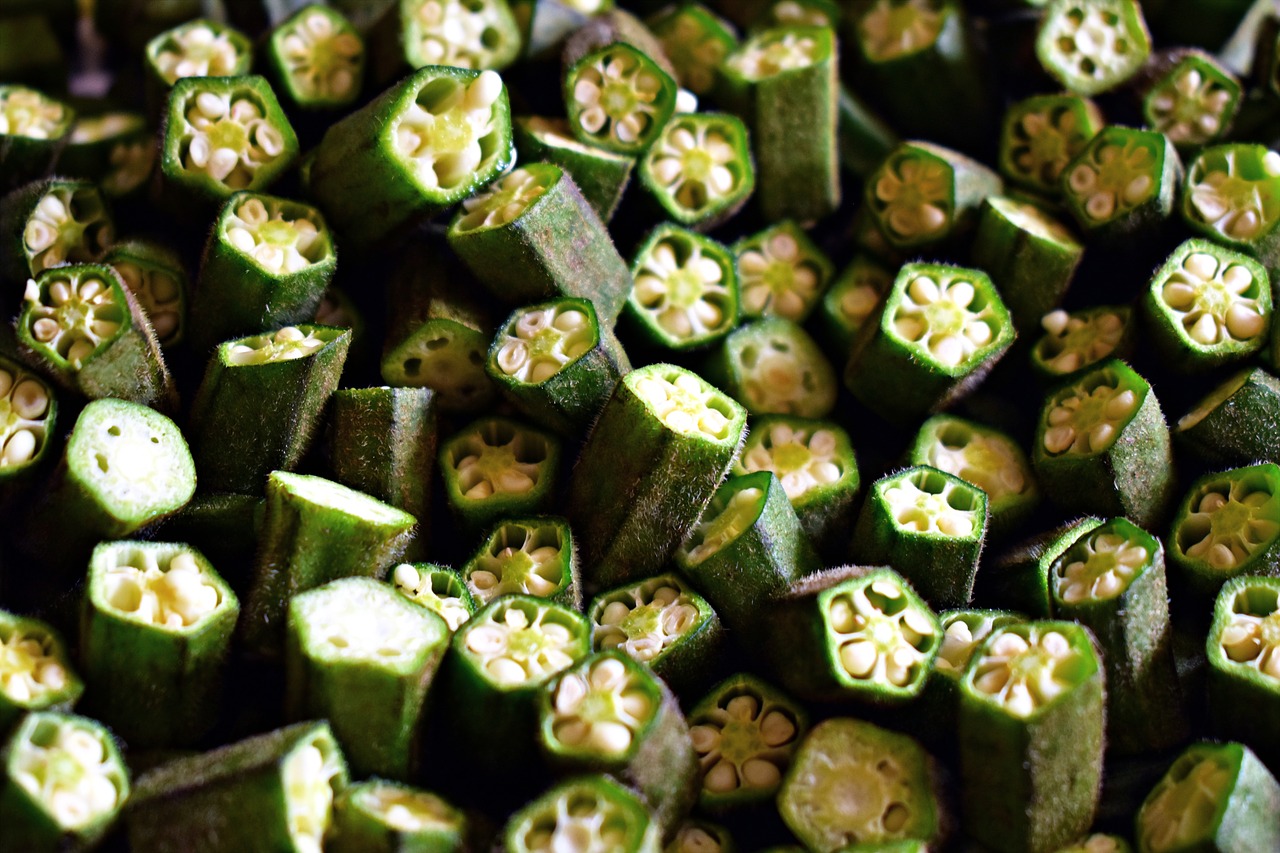
Image by Sandeep Handa from Pixabay
Okra ( Hibiscus esculentus L. )
Okra is an annual plant. Only 3 – 6 days after flowering and fertilization, very young fruits are used as vegetables in various ways, mostly cooked or stewed.
It would be best to preserve okra by drying, freezing, sterilization, and marinating. Food industry uses dried okra as a natural emulsifier and acts as an antioxidant. It reduces the crystallization of sugar, which is used in the confectionery industry. Ripe seeds in some countries in Asia and Africa are roasted as a coffee substitute.
The main root is deep and develops laterally in the surface layer of the soil. The stem is initially herbaceous and later woody and can be 23.5 inches to 6.5 feet high. The leaves are spirally arranged, round or oval, three-lobed or five-lobed. Bisexual flowers (white or yellow with a dark red or purple spot) are found in the axils of the leaves. The fruit is a quill on a short stalk.
Agroecological conditions for okra cultivation
The minimum temperature for germination is 60 – 63° F, and the optimal temperature is 84 – 86° F. Vegetative growth requires at least 60° F. The plant normally grows only above 68° F.
Temperatures below 50° F cause stronger growth retardation than those above 104° F.
Even the slightest frost destroys the plant.
It can withstand a shorter drought without major growth retardation, but an even water supply is essential for a good yield. Medium-heavy soils with good structures with a pH of 6 to 7 are the most suitable for okra cultivation, and it does not tolerate strongly acidic soils.
Agro technical measures for okra cultivation
Melons and cucumbers are suitable as the okra crop rotation plants because they have the same conditions for growth and development. A good yield requires a lot of nutrients. The recommended amounts are 535 – 715 pounds per acre of combined NPK fertilizer 10:20:20, with nitrogen supplementation during the vegetation 2 to 3 times with 17.84 – 26.8 pounds per acre.
Inter-row tillage is thinned as needed (in the spring) to the planned number of plants. In summer, you should water, fertilize and tie the plants to support.
Sowing and planting okra
Okra is sown when the danger of spring frosts passes, and when the soil at a depth of 5 cm reaches a temperature higher than 59 ° F. It is sown in the open space, with a row spacing of 23.5-39.5 inches and a row spacing of 8-12 inches, to a depth of 0.8-1.2 inches.
Before sowing, it is useful to soak the seeds for 24 hours in warm water (about 86° F), which will soften the seed coat. About 4.5 – 9 pounds of seeds are needed for one acre. Flowering begins 6 – 8 weeks after sowing, and soon after that, it’s the best time to harvest the okra plants.
You can also plant okra. Seedlings are grown in containers in a protected area for 4 – 6 weeks with 3 – 4 true leaves. It is planted in late April or early May, which corresponds to the climatic conditions of the Mediterranean area. It is grown on 60 inches wide beds covered with black PET foil in two rows with a row spacing of 13.8 inches and 11.8 inches with drip irrigation.
Okra – harvesting and storage
Harvest begins in late May or early June and lasts until late September or early October. With the harvest of fruits with a length of 3 – 3.5 inches, the plant can achieve a yield of 17.850 pounds per acre in this way three times a week. The fruits are picked by hand so that the fruit is slightly twisted and torn off. An allergic reaction can also be a problem because of small-haired pickers on the whole surface of the plant.
The fruits lose water very quickly and need to be cooled to about 50° F as soon as possible, packed in smaller packaging units, covered with foil. You can keep okra at the point of sale only for a short time, 2 to 3 days at 44.6° F.



